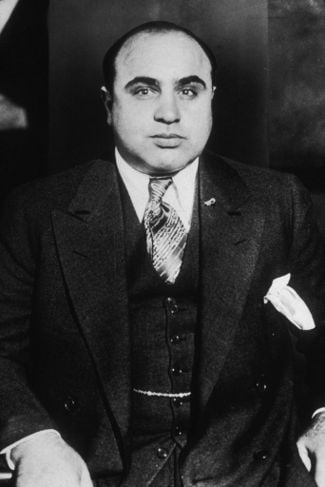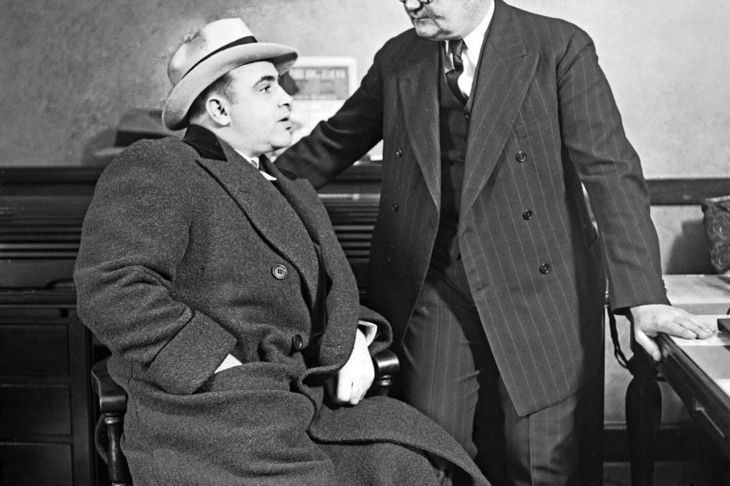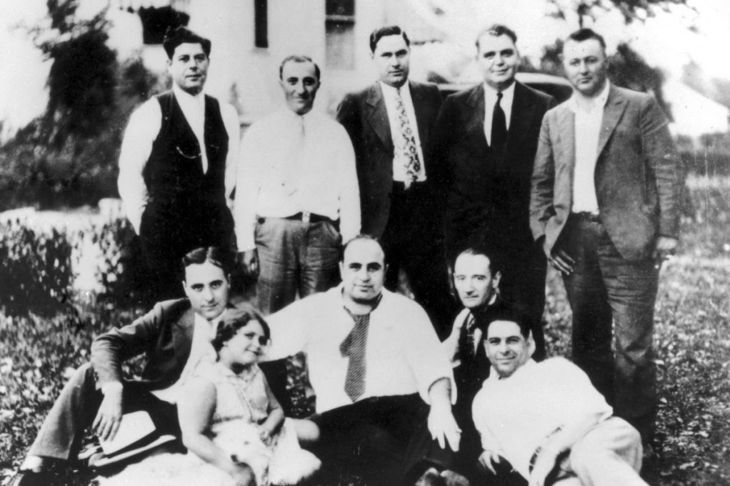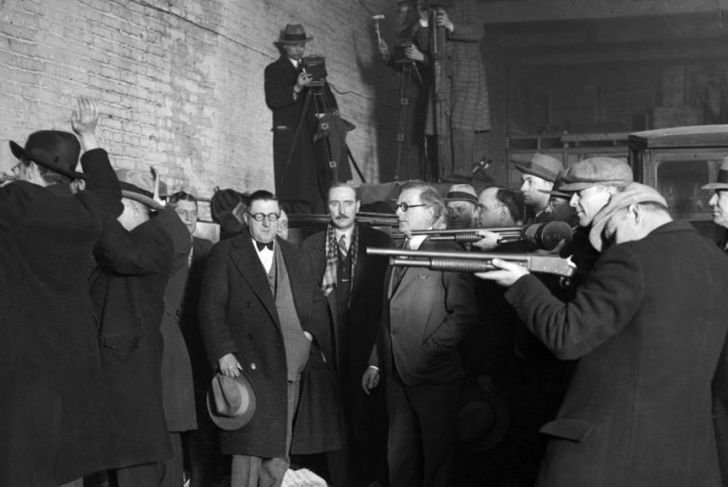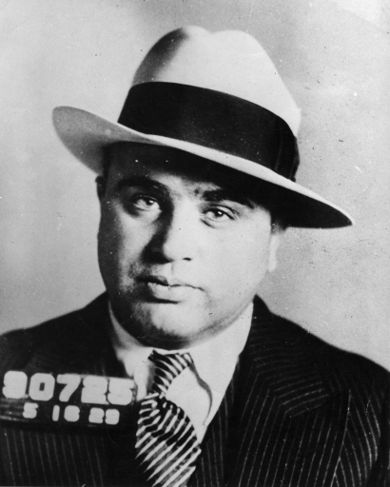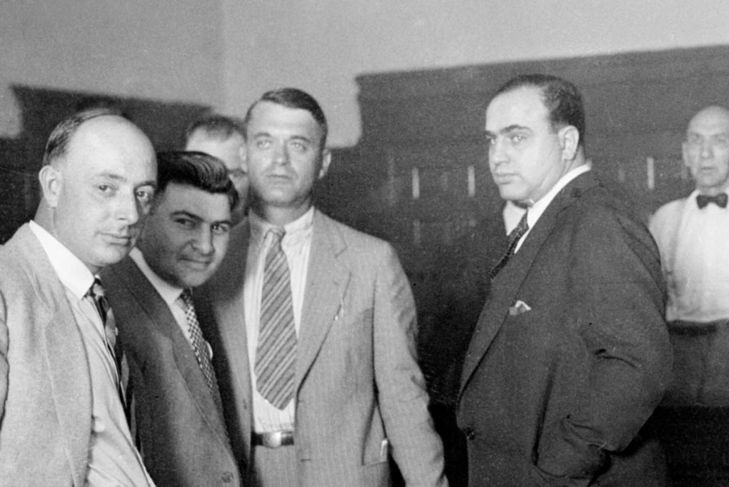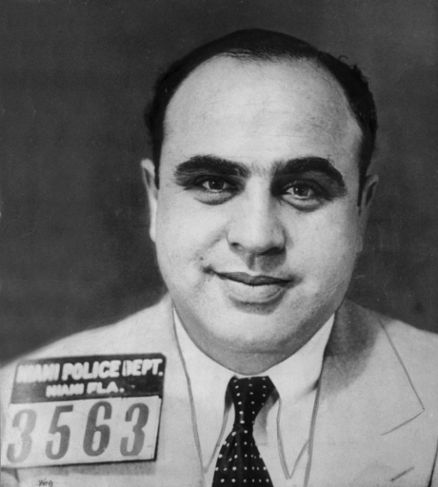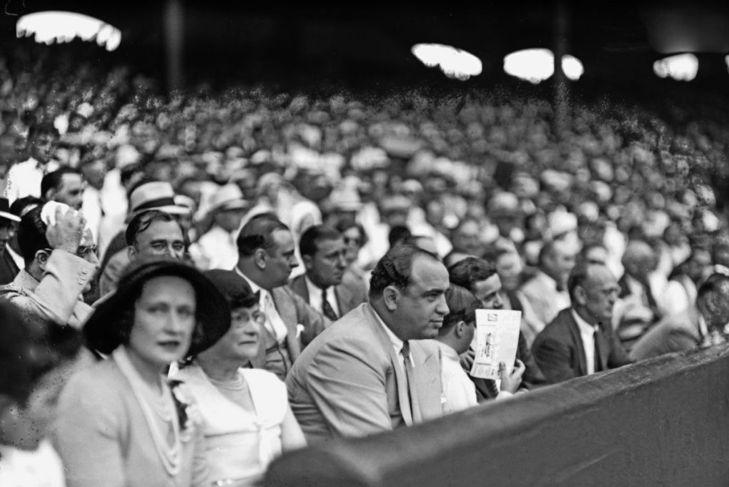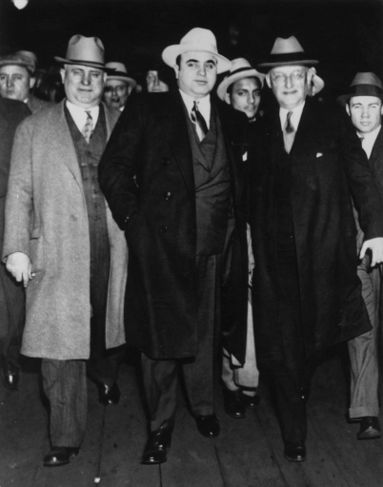Who was Al Capone? To some, the Brooklyn, New York-born gangster was a champion defender of poor and impoverished families. However, to most people – Capone was a notorious Prohibition-era thug who sent fear into the hearts of even the bravest of souls. Born in 1899 in the Empire City, Capone rose to infamous stardom during Prohibition via gambling, prostitution, and bootlegging. He built his criminal empire in Chicago while using violence as primary means to ward off rival factions and dominate the organized crime scene.
Capone’s Empire Undone
As the undisputed head of the Chicago mafia, Al Capone was never indicted on racketeering charges. He also mastered the art of evading law enforcement, especially the unit that was created to bring Capone to justice. Known as The Untouchables, this famous team of law enforcement agents was headed up by Eliot Ness. The blood feud that erupted between Capone and Ness was immortalized in the movie The Untouchables, featuring an award-winning performance by Robert De Niro as Capone. While Ness was successful in bringing down fellow gangsters and criminals across Chicago, his efforts against Capone proved futile. With bribery of judges, cops, and other officials commonplace for Capone – he was able to avoid prosecution until 1931. That is the year that Capone was finally brought to justice for income-tax evasion.
Capone Serves Time
Al Capone was sentenced to 11 years in prison on October 17, 1931. He was also fined $80,000 for criminal activities and other illegal operations. This included violation of the Volstead Act, which was the basis for Prohibition. Similarly, the fines would cover a portion of back taxes owed, as well as court costs and legal fees. Capone served six-and-a-half years in jail and was technically released on November 16, 1939. He was incarcerated at Alcatraz during most of his sentence but finished out his prison term at the Federal Correctional Institution at Terminal Island in California. Capone died in Miami on January 25, 1947, at age 48. His death was a result of pneumonia, which followed a stroke and cardiac arrest. He is buried at Mount Carmel Cemetery in Hillside, Illinois.
Capone – The Early Years
Al Capone, real name: Alphonse Gabriel Capone was born in New York City on January 17, 1899. As the son of Italian immigrants, he was a member of the notorious Five Points Gang in Southern Manhattan. Dubbed “Scarface” by his friends and fellow gangsters, Capone became a bouncer across several brothels before moving to Chicago in his early twenties. It was there where he met Johnny Torrio – a leading figure in the Chicago mafia and organized crime circuit. Johnny Torrio hired Capone as his bodyguard, but Al would soon grow to become Torrio’s trusted confidant. Together, both men built a criminal syndicate that specialized in illegal alcohol sales during Prohibition. Torrio and Capone’s gang were the forerunners of the Outfit – the infamous Chicago-based gang founded by Big Jim Colosimo in 1910. The Torrio – Capone gang often feuded with the North Side Gang for control of Chicago’s bootlegging, prostitution, and underworld gambling markets.
Capone Gains Power
The feud with the North Side Gang would eventually lead to the rise of Capone in Chicago. In fact, here are a few essentials of how Scarface came to power and dominated organized crime during Prohibition:
- Johnny Torrio retired after nearly being killed at the hands of the North Side mob.
- Torrio handed control of the mob family to Capone. This resulted in Capone expanding the bootlegging operations while incorporating increasingly violent means to deal with the North Side Gang – especially its leader, Dean O’Banion.
- After O’Banion was murdered by hitmen on November 10, 1924, Capone and his crew swept in and took over the North Side. This solidified Capone’s power and stranglehold over the entire city of Chicago.
- Al Capone was as violent and cunning as he was charming and nice. In fact, he made friends with local politicians and law enforcement officials. This ensured the growth of Capone’s criminal enterprise without the worry of arrest or jail time.
Saint Valentine’s Day Massacre
Al Capone reveled in his newfound power across Chicago. With much of the predominantly Irish-led North Side Mob out of the way, he concentrated on building a strong criminal enterprise – one that would rival New York City’s Lucky Luciano, Dutch Schultz, Bugsy Siegel, and other criminal figureheads across the nation. However, Capone still had to deal with remnants of the North Side Mob to unify his power and control over Chicago. On Valentine’s Day 1929, Capone ordered the murder of seven members and associates of the North Side mob. The killings occurred in the morning hours, which saw four unknown assailants gun down the gangsters in cold blood. While the perpetrators of this crime were never brought to justice, it was rumored that they were part of the Egan’s Rat Gang. Similarly, members of the Chicago Police Department were suspected of being involved; in part of revenge killing on the North Side crew for killing the son of a police officer.
Public Enemy Number One Falls
The Saint Valentine’s Day Massacre earned Capone the moniker of “Public Enemy Number One.” While the public view of Capone was that of a philanthropist and businessman, it quickly changed to a demand for justice and a swift end to the Bootleg Wars that plagued the city during Prohibition. With Eliot Ness hot on Capone’s trail, it was the IRS that finally pinned Capone down with tax evasion charges. This led to a guilty verdict in a highly publicized case, and the final nail in the coffin for Chicago’s – if not – America’s most popular and glamorized Mafioso.
IRS Justice
Capone left behind a criminal legacy that would be emulated by scores of future gangsters and organized criminal outfits. In fact, he paved the way for many of today’s criminals to ply their trades while avoiding prosecution. However, in the end – the only two choices Capone had was lengthy imprisonment or death at the hands of new rival factions that swept in to fill the Chicago underworld power vacuum. Today, Capone continues to be the main figure in Hollywood depictions of Prohibition-era gangsters and criminal enterprises.
Capone’s Legacy
Today, Capone continues to be the main figure in Hollywood depictions of Prohibition-era gangsters and criminal enterprises. His criminal ways have been highlighted on the silver screen in dozens of films, documentaries, and TV shows. This includes HBO’s Boardwalk Empire, Road to Perdition, Gangster Land, Mobsters, and scores of other movies. Capone has also had several books written about him, including The Life and Legacy of Al Capone, Capone, St. Valentine’s Day Massacre, and other publications.
Chicago Aftermath
Despite Capone’s imprisonment and death, the Chicago Outfit continued to grow and expand at alarming rates. In fact, the Chicago Police Department now had to deal with Capone’s former lieutenants fighting for power. Prohibition had also been repealed on December 5, 1933 – leading many law enforcement officers to wonder if all their efforts were in vain. In the 1950s, several of Capone’s former associates had built a new criminal organization. This mafia group would reign supreme over the Chicago underworld but propelled the FBI to step up its efforts once again.
Exodus
Al Capone remains one of America’s most intriguing and interesting criminal figures. Known for the gift of gab, he steamrolled his way to the top of Chicago’s underworld with sheer violence. However, his sweet tongue and antics paralleled his rough demeanor – and Capone was admired by politicians and law enforcement personnel alike. Still, in the end – his empire crumbled to smithereens, and the government reigned supreme. This is what Al Capone’s criminal legacy is synonymous with today.

 Home
Home Health
Health Diet & Nutrition
Diet & Nutrition Living Well
Living Well More
More